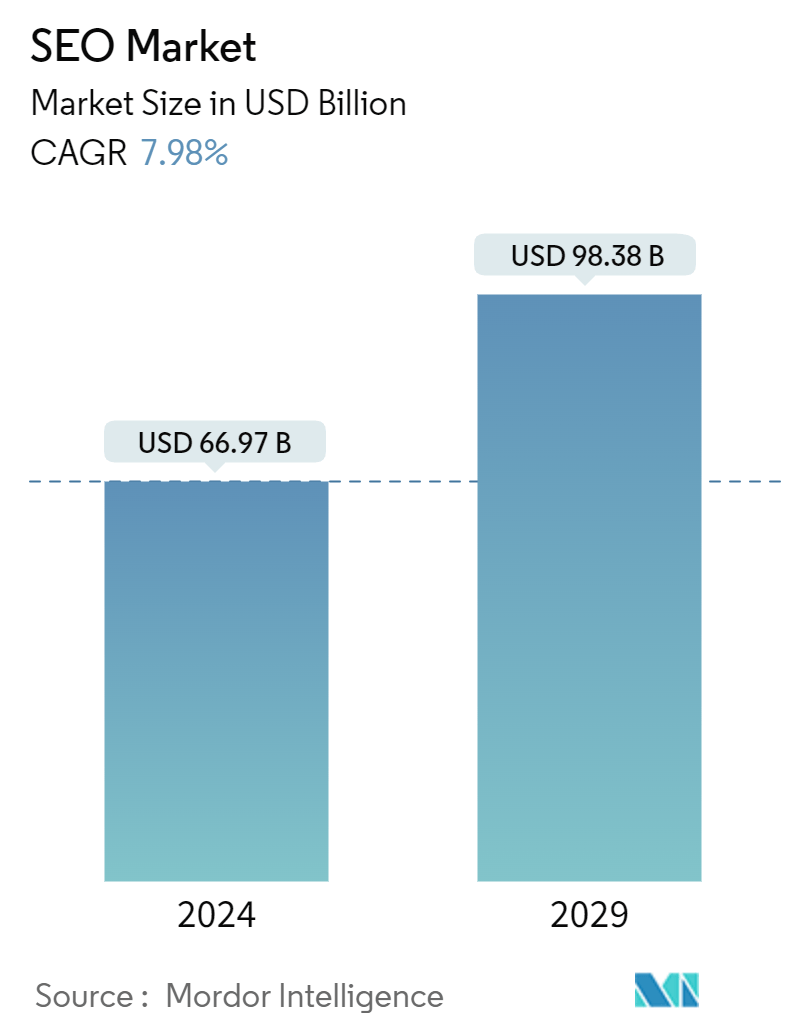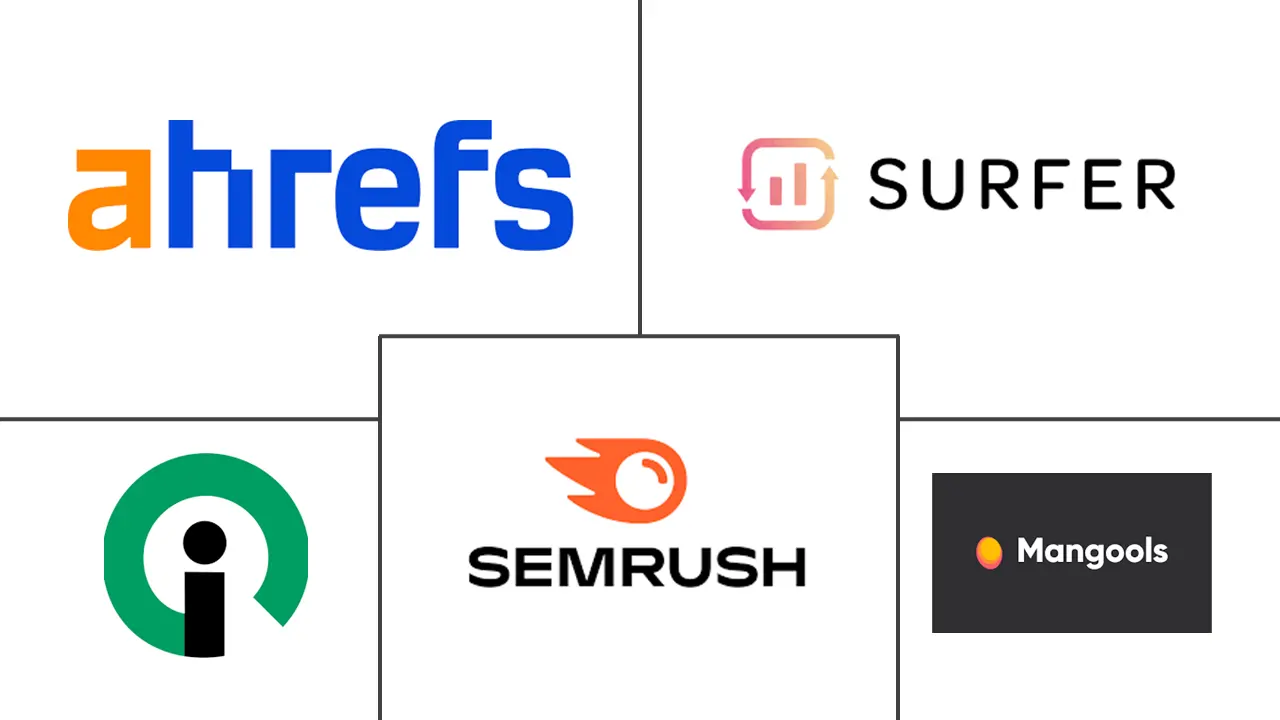Market Size of SEO Industry

| Study Period | 2019 - 2029 |
| Market Size (2024) | USD 66.97 Billion |
| Market Size (2029) | USD 98.38 Billion |
| CAGR (2024 - 2029) | 7.98 % |
| Fastest Growing Market | Asia Pacific |
| Largest Market | North America |
Major Players
*Disclaimer: Major Players sorted in no particular order |
SEO Market Analysis
The SEO Market size is estimated at USD 66.97 billion in 2024, and is expected to reach USD 98.38 billion by 2029, growing at a CAGR of 7.98% during the forecast period (2024-2029).
- Establishing a robust online presence stands as a pivotal driver of market growth. In today's digital landscape, businesses acknowledge that a formidable online footprint is essential for success. As individuals turn to search engines for information, products, and services, companies are dedicating resources to enhance their online visibility. The internet has transformed the world into a global marketplace. From local brick-and-mortar stores to multinational corporations, businesses recognize that their online presence frequently serves as the initial touchpoint with potential customers.
- AI and Machine Learning are at the forefront of the latest SEO trends. AI enables machines to mimic human intelligence, facilitating data analysis, conclusion drawing, and experiential learning. As a branch of AI, ML equips machines to evolve and enhance autonomously without requiring direct programming. AI-powered tools handle on-page optimization, fine-tuning meta tags, titles, URLs, and internal linking. Meanwhile, ML algorithms shift through vast datasets to spot patterns, offering strategies that bolster search rankings. These tools' prowess in SEO is amplified by their ability to deliver real-time insights on site performance and user experience.
- Mobile-first indexing has emerged as a crucial SEO factor, with mobile device usage surpassing that of desktops. Google now primarily indexes the mobile versions of websites, underscoring the need for responsive and mobile-friendly designs. To thrive in 2024, websites must be optimized for mobile, featuring swift loading times, intuitive navigation, and seamless user experiences across all screen sizes. Moreover, Google's heightened focus on user experience is evident with the integration of Core Web Vitals into its ranking criteria. These metrics assess interactivity, page loading speed, and visual stability. Boost your website's user experience by enhancing page speed, minimizing intrusive elements, and ensuring fluid scrolling and interactions.
- Small and medium-sized enterprises (SMEs) often need more in-house resources for effective digital marketing and SEO. Consequently, many SMEs seek the expertise of external SEO service providers to boost their online visibility and draw in potential customers. These specialized SEO services are cost-effective and tailored to address smaller businesses' unique challenges. These services empower SMEs to compete robustly in their respective niches by emphasizing local SEO, content optimization, and budget-conscious strategies. Given these SEO providers' flexibility and affordability, they have become the go-to choice for SMEs.
- SEO tools often need help to keep pace with the dynamic and ever-evolving nature of search engine algorithms, making it challenging to deliver precise and actionable optimization advice. The SEO tools market is highly competitive, with numerous companies offering similar features and functionalities. This intense competition can pressure businesses in the industry to reduce prices, subsequently squeezing their profit margins. Moreover, changes in search engine policies and algorithm updates can significantly influence the effectiveness of SEO strategies and tools. Consequently, businesses reliant on these SEO tools and techniques may navigate unpredictability with shifts in search engine algorithms or policies.

